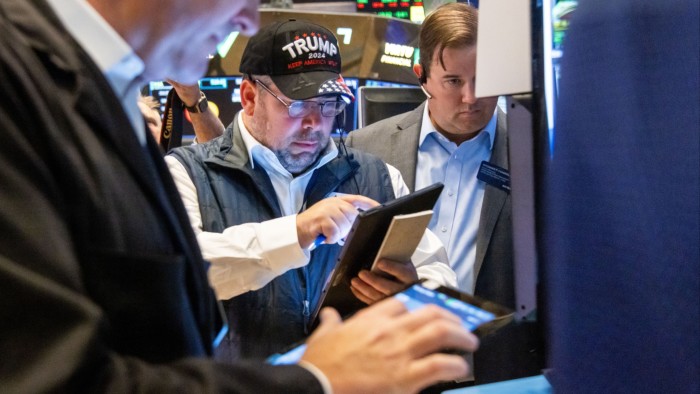Unlock the Editor’s Digest for free
Roula Khalaf, Editor of the FT, selects her favourite stories in this weekly newsletter.
Is the era of central bank independence drawing to a close? With Donald Trump returning to the White House the question has to be asked. The incoming president has made no secret of his desire to bring the Federal Reserve, guardian of the world’s pre-eminent reserve currency, to heel.
Of course, the merits of independent central banking can be overstated. Central bankers have credited themselves with delivering sustained low inflation in the 1990s and 2000s — the Great Moderation — when in reality stable prices were largely the product of a global labour market shock. This resulted from the incorporation of China and other developing countries into the world economy. There followed a profound shift in the balance of power between labour and capital and a tilt in the distributional struggle between debtors and creditors in favour of the latter. Nor have central bankers distinguished themselves in managing the recent upsurge in inflation following the Covid pandemic and Russia’s invasion of Ukraine.
Yet the alternative to central bank independence is scarcely palatable. Think only of the wholesale politicisation of monetary policy at times in Turkey or Argentina to register the point. The ability to carry out monetary policy insulated from governmental pressure is clearly valuable. The logic is that elected governments have an incentive to lower unemployment in the short run at the expense of longer run impacts on inflation and growth. They also have an incentive, when heavily indebted, to rely on inflation to reduce the real value of debt obligations.
As voters in the 1970s and 1980s grasped, such trade-offs are disastrous. The outcome was that monetary policy authorities across the world lost credibility. It took sky high interest rates, global recession and inspired central banking by the Fed’s Paul Volcker to put the world back on a low inflationary track. In monetary policy, credibility is all.
On that basis there are good grounds for thinking that independence in pursuit of the Fed’s dual mandate of promoting maximum employment and price stability will be vital under a Trump administration that enjoys Republican majorities in both the House and the Senate. Trump has pledged to pursue a plethora of inflationary macroeconomic and trade policies, such as expansive tax cuts, heavy import tariffs and mass deportations of immigrants which will impose serious tightening in labour markets. In effect the US economy will confront big supply shocks coinciding with expansionary fiscal policy. This points inexorably to higher and more volatile inflation, all against the background of public debt surging past 100 per cent of GDP and expectations of a more deregulatory environment in banking that will encourage a return to excessive risk taking.
On top of this comes the eccentric addition of Trump’s crypto obsession. Maurice Obstfeld, former chief economist at the IMF, points out that crypto constitutes an unprecedented threat to inflation because most cryptocurrencies, aside from stablecoins, are disconnected from the real economy and operate beyond the reach of public policy. They thus introduce significant uncertainty into financial transactions, making them an unreliable foundation for economic decisions.
Despite the Fed’s remarkable achievement in staving off recession while bringing inflation down close to its two per cent target, some folk on Capitol Hill are promoting crypto as an answer to central bank failure. Obstfeld points out that Republican senator Mike Lee, for example, has characterised the dollar as “unstable” owing to its alleged role in enabling the federal deficit. He has introduced legislation to prohibit the Fed from launching its own digital currency. If enacted, says Obstfeld, the prohibition would leave more room for unregulated cryptocurrencies, potentially facilitating illicit activities. The Fed’s influence over the economy would thereby be reduced.
Elsewhere, Cynthia Lummis, a US senator from Wyoming, has introduced a bill in July to create “strategic bitcoin reserve”, saying it would strengthen the financial condition of the US, providing a hedge against economic uncertainty and monetary instability. The reality is that the crypto bubble is largely the product of the ultra-loose monetary policy that followed the financial crisis of 2007-08. As well as being ultra-volatile it has huge potential to precipitate financial instability, bailouts and the risk of recession.
Does this all, you might ask, point to a Liz Truss-like fiasco and a field day for bond vigilantes? Unlikely, is the short answer, because the world’s reserve currency enjoys so-called exorbitant privilege. As long as no other country offers as deep and liquid a market as US Treasuries, vigilantism has no great purchase. That said, the combination of huge public debt issuance and the notorious Trumpian unpredictability is a toxic mix for markets. The Treasury market is set for turbulent times. Stand by for financial instability.
Read the full article here

